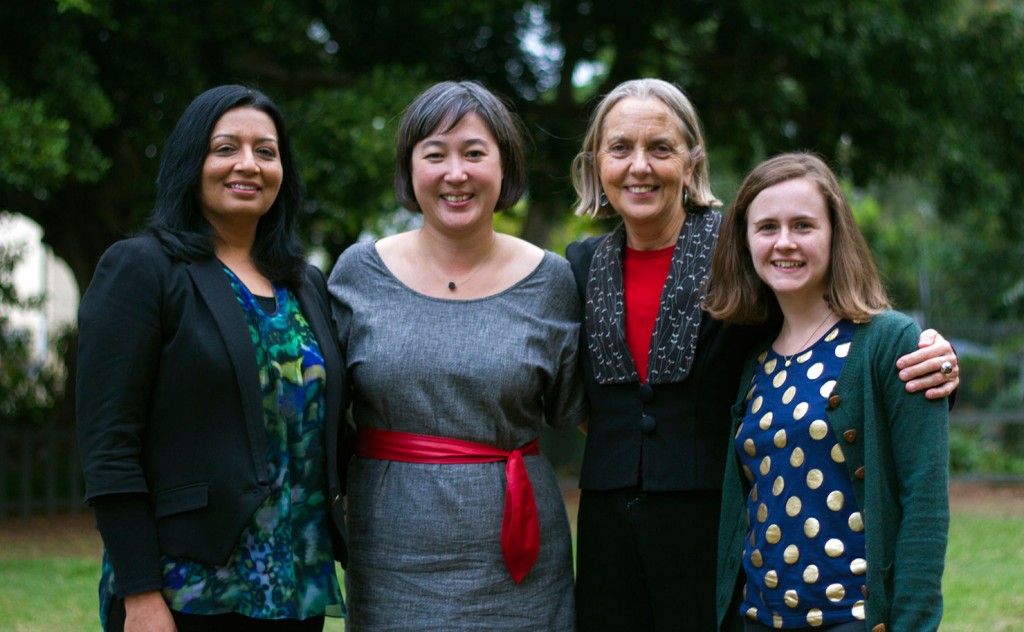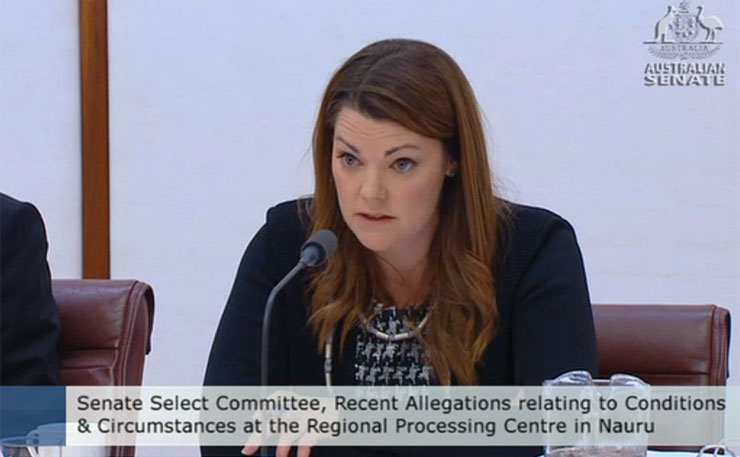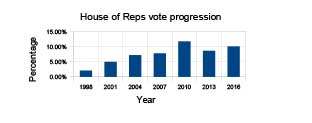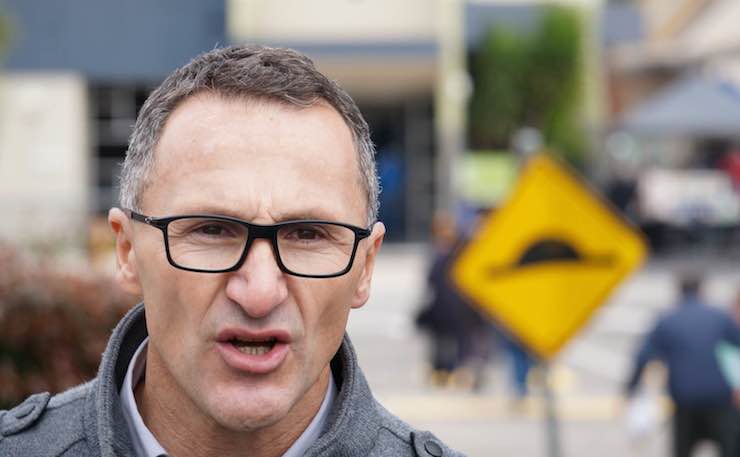Commentary that the Greens failed at the 2016 federal election is misplaced, writes Chris Harris*.
In the 2016 post election wash up a number of people, both inside and outside the Greens, have tried to analyse why the Greens “did so poorly” especially in NSW and in the Senate. Among them have been Osman Faruqi, in this story in the Guardian and Max Chalmers in his story in New Matilda.
The basic thrust of the stories is that the Greens will never get beyond 10 per cent of the vote because they aren’t capitalising on the alienation with the major parties due to becoming too mainstream. They have become a ‘middle of the road party’ (Faruqi) and, according to Chalmers’ article, The Greens NSW is a bit of a basket-case because of its unprofessional approach to campaigning (read decentralised, ‘grass-roots’).
The problem with the analyses, apart from the fact that, at least superficially, they contradict each other, is that they make no sense at all when you look at the big picture over the long-term. In effect, what those pundits did, in looking at one election and a few individual results, was to take the equivalent of a single opinion poll with a very low number of participants and a very high margin of error and prognosticate based on that single poll.
It’s a bit like saying “Oh, independents are doomed” simply because the two most high profile independents at this election (Windsor, Oakeshott) didn’t win. The commentaries lump together unconnected issues such as the, allegedly, low Senate vote, especially in SA, the relative failure in inner metro seats in NSW, the different structures of the party in Victoria and NSW and the results of the NSW 2015 state election. To get a real understanding of the Green’s situation you have to look at those issues separately.
The analyses also assume several things, all of which are based on the writers’ assumptions about the goals of the Greens, albeit that those assumptions are implicit rather than stated. These include the idea that the Greens, under Di Natale, have become more moderate and that the aim of the party should be to build the vote beyond 10 per cent, presumably with the aim of moving towards being a ‘governing’ party.
While Di Natale’s tone may be more moderate, there is little or no evidence that Green’s policies are substantially different, especially given that these would need to be changed by consensus. Nor is there any evidence that a substantially larger vote (or a formal role in Government) would achieve the outcomes that the Greens are seeking… which is, presumably, to get their policies implemented.

It’s arguable, that staying outside Government with a vote only large enough to hold the balance of power would be the most effective way of ensuring that Green’s policies are implemented, given that being in Government inevitably requires more compromise.
To return to some of the specific assumptions.
Organisationally the Greens in NSW are a little different to other states. Specifically, it’s the only state where a local group (the equivalent of a branch) retains all of the funding from election income (Government electoral funding based on vote) and a substantial proportion of funds from fundraising.
The state office and the election campaign team only has some state-raised funds and access to funds generated by votes received in the upper houses (NSW Legislative Council and Senate) and, given the self-imposed restrictions and lack of focus on fundraising of the NSW state party, even these funds are limited relative to other states.
This creates a problem both for the Senate and Legislative Council elections, in NSW. The level of upper house vote depends, to a significant degree, on effective campaigns right across the state. Where one has effective local group campaign this drives up not just the vote in the lower house, but the upper house vote as well.
But across swathes of NSW, there are areas where campaigns in seats are effectively defunct or, at best, ineffective. The low vote in these seats means that electoral funding is also low (or if the vote is below 4 per cent, zero) thus creating a vicious cycle of inadequately resourced campaigns and inactive local groups.
By comparison, in Victoria, state office has access to the funds from lower house electoral funding, allowing it to resource regional campaigns more effectively and has done so, at least in state elections, by employing regional organisers in each state region.
This ensures some minimum level of organising and campaigning state-wide, even if those in the regions still complain about lack of funding. These campaigns drive up the state-wide vote, meaning a higher vote in both the Senate, in Victoria and the Victorian Upper House.
The factors peculiar to NSW do not, however, explain the low Senate vote in South Australia, or the relative failure of lower house campaigns in NSW, relative to Victoria, in the 2016 Federal election.

South Australia is again a specific case, affected partially by the Xenophon vote and partially by the love/hate relationship of both the public and the Greens for Sarah Hanson-Young.
It’s unarguable that, while some part of both the Greens and the public love Hanson-Young, there are parts of both that detest her and will neither vote for her nor support her due to her personality and her displays of personal ambition.
There is no objective evidence that this depresses the Greens Senate vote in SA, but anecdotal evidence suggests it could be the case.
The relative failure of the Greens NSW in the recent federal election, in the seats of Grayndler and Sydney, is taken as evidence of a dysfunctional campaigning model and of the decentralised ‘grass roots’ model.
If this was the case, how does one explain both the relative success of the campaign in Richmond (northern NSW), the success in the last NSW state election in 2015 (where NSW, arguably, performed better than Victoria in its state election) and some other NSW seats where the vote rose substantially in 2016?
It’s more likely that relative failure of the Greens in Grayndler and Sydney is explained by the specific factors to do with the personal popularity of Albanese and Plibersek, combined with high levels of Labor spending.
| Seat | 2013 | 2016 |
| Melbourne (Vic) | 42.60% | 43.60% |
| Batman (Vic) | 26.40% | 36.20% |
| Wills (Vic) | 22.20% | 30.50% |
| Higgins (Vic) | 16.80% | 25.40% |
| Melbourne Ports (Vic) | 20.20% | 23.90% |
| Grayndler (NSW) | 23.00% | 21.90% |
| Gellibrand (Vic): | 16.70% | 21.40% |
| Richmond (NSW): | 17.70% | 20.30% |
| Brisbane (Qld) | 14.3% | 19.30% |
| Kooyong (Vic): | 16.60% | 18.70% |
| Sydney (NSW): | 17.30% | 18.50% |
| Ryan (Qld) | 14.40% | 18.50% |
Simply, there is limited connection between the success of electoral campaigning in NSW and the structural dysfunction within the internal party structure. The 2015 NSW state election campaign was successful because it employed a team of highly skilled organisers and a first rate communications team.
That team was complemented by competent and skilled campaigners in the seats of Balmain, Newtown, Ballina and Lismore. The Greens would likely have won the seat of Lismore in northern NSW had not the metropolitan bias of the Greens NSW denied it more funding.
The same organising team that operated in the 2015 NSW state campaign also worked on the Richmond Federal campaign. It’s no coincidence that Richmond achieved the highest swing of any targeted NSW Federal seat, remembering that the ALP and Coalition also devote extra resources to seats which are seen as under threat.
What is true is that all of these NSW campaigns could have been more successful if they hadn’t been hampered by the chaotic structure of the NSW party structure and the mythology that surrounds that structure.
One part of that mythology is the myth that NSW is ‘grassroots’. It is no more so than many other states and, in fact, the focus on local group independence is what keeps many local groups effectively defunct, and allows many local groups to be controlled by a handful of individuals to the detriment of the party as a whole.
But the power brokers in NSW simply tend to dismiss criticism and critics by repeating that ‘grassroots’ control means that all is well, and that criticism of the structures is just part of a misplaced desire for more centralism.
Simply put, it’s impossible, to ascribe universal national factors to the performance of the Greens at the 2016 federal election or any other election. One has to look at a range of specific factors, including the quality of campaign teams, the quality of the opposition, the popularity of candidates, the funding structures and models, preference flow and the specific circumstances in each election, among a range of other factors.
It is simplistic and uninformed to try and build big picture analyses based on inaccurate and contradictory information that doesn’t take into account a range of differing factors.
Additionally, the tendency to compare results in 2013 and 2016 with 2010 is illogical, since the Greens 2010 result is clearly anomalous. Quite what led to that anomalous result is debatable but, as the data shows, the results in 2013 and 2016 are much nearer to what one might see as being part of the normal growth curve, a fact supported by the results in lower house seats nationally.

Even ignoring the 2010 result, the Senate vote went backwards relative to both 2007 and 2013, but not by a substantial margin. This could be explained by a number of factors including the increased focus on lower house seats, the preferencing arrangements in the Senate and the changes to Senate voting laws in 2016.
| Chamber | 1996 | 1998 | 2001 | 2004 | 2007 | 2010 | 2013 | 2016 |
| House of Reps | 1.70% | 2.10% | 5.00% | 7.20% | 7.80% | 11.76% | 8.65% | 10.10% |
| Senate | 2.40% | 2.70% | 4.90% | 7.70% | 9.00% | 13.1% | 8.70% | 8.30% |
It’s impossible to draw the sorts of conclusions about the Greens that have been drawn by some of the pundits. It is possible to state, however, that effective campaigns win elections regardless of most other factors, and that the performance of the NSW Greens has less to do with effective campaign strategy and performance and more to do with state structures and myths both of which combine to hamper effective reform.
Nationally campaigns are hampered by the absence of a real national campaign structure which would allow the implementation of properly resourced, well communicated and strategic campaigns rather than eight separate state campaigns tied together with a semblance of national coordination.
* Chris Harris is the former Greens National Campaign Coordinator (2010-2013) and the NSW State Campaign Coordinator in the 2015 election.
Donate To New Matilda
New Matilda is a small, independent media outlet. We survive through reader contributions, and never losing a lawsuit. If you got something from this article, giving something back helps us to continue speaking truth to power. Every little bit counts.




